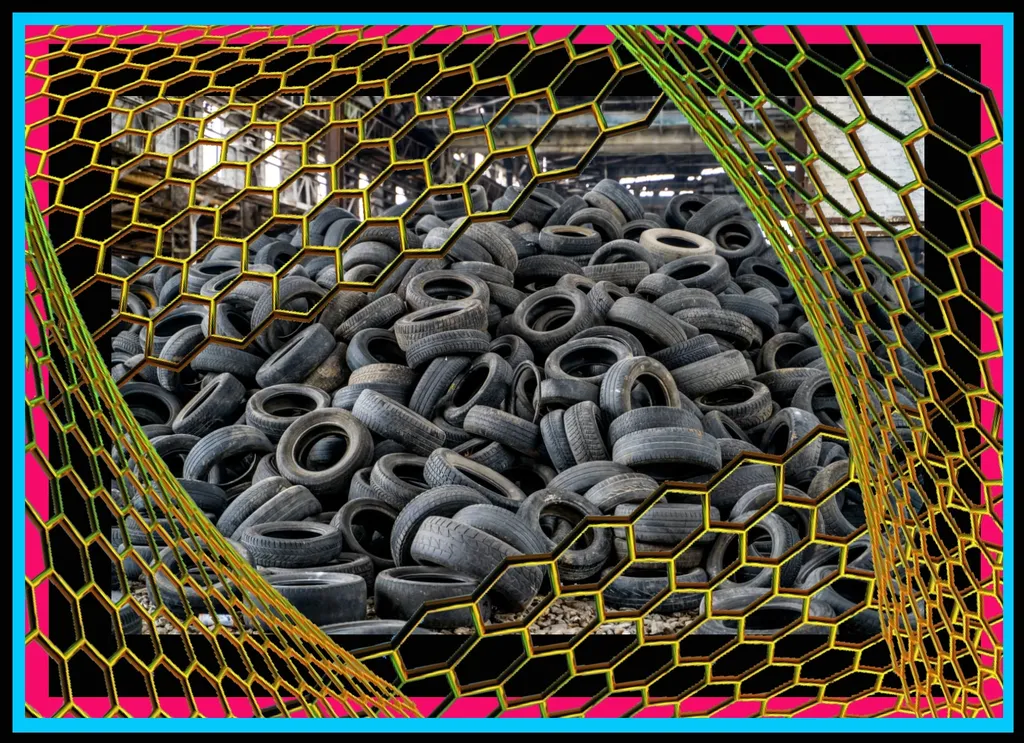In the quest for sustainable construction materials, researchers have turned an unlikely waste product into a valuable asset, offering a promising solution to two pressing environmental challenges: the mounting piles of discarded tires and the substantial carbon footprint of cement production. A recent study, led by Arian DarvishaliNezhad from the Department of Civil Engineering at the University of Mohaghegh Ardabili in Iran, explores the potential of recycled tire waste and pozzolanic additives to optimize the mechanical properties of green concrete. The findings, published in the journal *Next Materials* (translated as “New Materials”), could reshape the future of eco-friendly construction and offer significant benefits to the energy sector.
The construction industry is under increasing pressure to reduce its environmental impact, with cement production alone accounting for nearly 8% of global CO₂ emissions. Meanwhile, billions of tires are discarded annually, posing long-term pollution risks due to their non-biodegradable nature. DarvishaliNezhad’s research addresses both issues by developing an eco-friendly concrete that incorporates recycled tire rubber, steel fibers, polypropylene fibers, and micro-silica.
The study reveals that while rubber powder reduces compressive strength, it significantly enhances ductility and energy absorption, making it an excellent choice for seismic-resistant applications. “The addition of rubber increases the concrete’s ability to bend without breaking, which is crucial in regions prone to earthquakes,” explains DarvishaliNezhad. This improved ductility could be a game-changer for infrastructure development in high-risk seismic zones, offering enhanced safety and resilience.
Moreover, the integration of micro-silica and steel fibers improves the concrete’s matrix cohesion, with some mixes achieving compressive strengths even higher than conventional concrete. “We found that the optimal blend of recycled materials not only matches the performance of traditional concrete but also reduces costs and environmental impact,” says DarvishaliNezhad. The study’s computational modeling, using genetic algorithms and artificial neural networks, further optimizes mix designs, ensuring high performance and sustainability.
The commercial implications for the energy sector are substantial. Sustainable construction materials can significantly reduce the carbon footprint of energy infrastructure projects, such as wind farms, solar plants, and power grids. By adopting these eco-friendly concrete solutions, energy companies can align with global sustainability goals, enhance their corporate social responsibility profiles, and potentially benefit from green incentives and certifications.
The research also supports the principles of the circular economy, where waste materials are repurposed and integrated into new products. This approach not only reduces waste but also conserves natural resources and lowers production costs. “Our findings demonstrate that it is possible to create high-performance, eco-conscious materials without compromising on quality or cost,” DarvishaliNezhad emphasizes.
As the construction industry continues to evolve, the integration of recycled materials and advanced computational modeling is likely to become a standard practice. DarvishaliNezhad’s research, published in *Next Materials*, paves the way for future developments in sustainable construction, offering a practical and innovative solution that benefits both the environment and the economy. By embracing these advancements, the energy sector can contribute to a greener, more resilient future.

